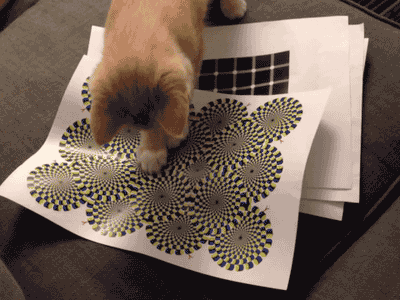The effects of this image works best in peripheral vision,
so when you stare at one of the coils it will appear
stationary while those around it will appear to rotate

Although the coils in the image appear to be rotating, in reality they're completely stationary.
The effect works best in peripheral vision, so when you stare at one of the coils it will appear
stationary while those around it will appear to rotate. This wonderful illusion was created by
Japanese psychologist Akiyoshi Kitaoka from Ritsumeikan University in Kyoto. Vision experts aren't
exactly certain why it works; however, their research has revealed that the shading of the segments
that make up the rings is crucial. These segments are arranged in a repetitive pattern consisting of
a relatively dark area (yellow) followed by a brighter one (white), then a less bright one (blue),
and finally the darkest area (black). Information from high-contrast parts of the image (yellow-white,
white-blue and blue-black) travels to the brain faster than that from low-contrast parts (blue-black).
It's believed that this 'staggered' information mimics the type of input that the eyes and brain
receive when they see genuine motion, and so you end up believing that you're looking at actual movement.
Explanation by RICHARD WISEMAN
